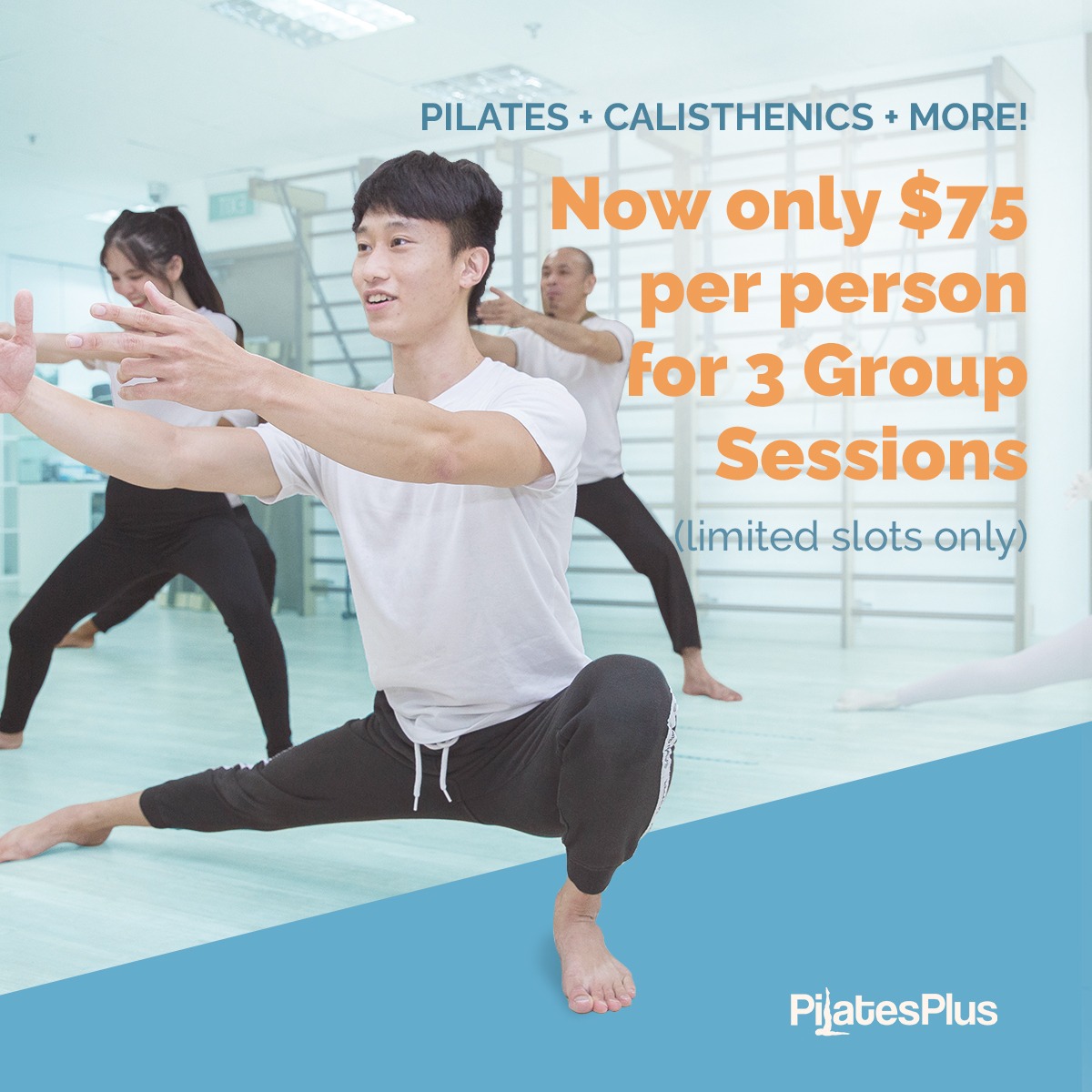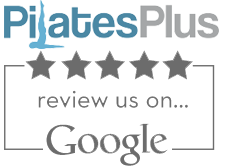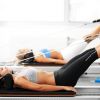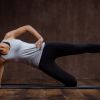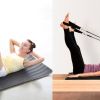What Can You Do on A Pilates Reformer? Positions to Exercise!

Though Pilates exercises can be done on the mat, the Reformer equipment has become a very familiar sight when you think of doing Pilates. Its unique appearance and the interesting movements you can do on it make it very appealing to both first-timers and die-hard Pilates practitioners alike.
There are hundreds of movements that you can do on the Pilates Reformer machine that can target your whole body to do either stretch or strength work. You can lie, sit cross-legged on the carriage, sit on a box, lie face down or up on the box, kneel, or stand to do your exercises on the Pilates Reformer.
First, let us take a closer look at this uniquely designed machine to have a better idea of how it is possible to do so many exercises on this single piece of equipment.

The Pilates Reformer machine has the size slightly smaller than a single bed with a carriage that covers half of its length. The carriage has rollers underneath so it can move horizontally within the frame and is connected with springs to the front end. Most Reformers has 4 or 5 springs that offer different resistance that can be removed to adjust how much tension you want to have on a specific movement.

A pair of straps are connected to the carriage that is looped in a pulley system at the back end of the frame as it goes back to the carriage area. The carriage will move as you pull the straps.

At the front end of the Reformer is a foot bar that can be adjusted in height. The foot bar will serve as an anchor point for you to place your hands or feet to do certain exercises. A common addition to the Reformer machine is the sitting box that can be placed lengthwise or crosswise over the carriage.
If you want to know more about this Pilates equipment, you can read more about the reformer in a separate article here. Now that you have a rough idea of the components of a Pilates Reformer, let me take you through the different possible positions you can be in to do your exercises on it.

Supine exercises on the Reformer
One of the most common ways to start the Reformer exercises is to lie down on your back on the carriage. In this position, you can have the following options:
- Pushing the foot bar to strengthen or stretch your lower body and work on stabilizing your spine at the same time. The foot bar does not move when you push it, but the carriage will move backward instead. This movement is very effective in rehabilitating back injuries. It places the spine in a neutral position while the legs exert effort to push the bar.
- Placing your feet in the loops and moving your legs in different patterns mid-air. One of my favorite exercises on the Pilates Reformer as I can do stretching to open my hips while lying down.
- Holding the loops and pulling them in various directions to do an arm or abdominal workout.

Sitting exercises on the carriage of the Reformer
Another way to position yourself on the Reformer machine is by sitting on the carriage. You can face front, back, or sidewards to do some arm movements while holding the straps. This will challenge your arms, posture, and your core as the carriage moves while you pull the straps.
Alternatively, you can place your hand on the foot bar while sitting on the machine, and you will end up with a different exercise to work on.

Exercises on the sitting box of the Reformer machine
The sitting box is a separate apparatus from the Reformer but it is an integral part of completing your exercise routine. You can place the box lengthwise or crosswise over the carriage in order to use it. It is a simple addition, but it adds many varieties to what you can do on it. Here are some of the common usage of the sitting box:
- Sitting on the box facing front or back to work on your posture and arms by pulling on the straps.
- Prone position on the box to work on your spine extension and arms
- Supine position to challenge your arms and abdominal muscles
- Sitting position sideways to work on your core and spine flexibility

You can be on your knees and workout on the Reformer
Kneeling exercises can be done on the reformer. You can either assume a four-point kneeling where your hands will be supported by the foot bar and your knees on the carriage. You can push the bed with your legs as you work on stabilizing your entire body as the bed moves back and forth. This is a great exercise to work on your core, arms, and legs simultaneously.
Another version is the high kneeling position on the Reformer. You can be facing front, back, or sides, mostly holding the straps with your hands. This position will work your arms and is also very challenging to core muscles, balance, and stability.

Standing to do stretching and strengthening exercises!
An interesting exercise position you can do on the Reformer. You can stand on the carriage while holding the straps, and it will move as you pull the straps. This position can be very unstable and requires a lot of concentration and control. You can do only do this when you reach the advanced level.
Another way of standing on this machine is to have one leg on the front end of the frame, which usually comes with an extended platform and the other leg will be on the carriage. This will allow you to work on your hips to either strengthen or stretch them.
The easiest and most stable standing exercise version is with one leg on the floor and the other leg on the carriage. This is a very stable position that is suitable for beginners to understand how the bed moves in relation to the frame and is very effective in stretching your hips muscles.
These are only the common positions you can do your exercises on the Pilates Reformer. If you are creative enough, you can actually invent new exercises to target movements specific to your sports or daily activities.
The caveat on using the Pilates Reformer, though it offers hundreds of variety of exercises you can work on, you will need a Pilates teacher to guide you. It is not as user-friendly when compared to common exercise equipment you can find in a gym.



